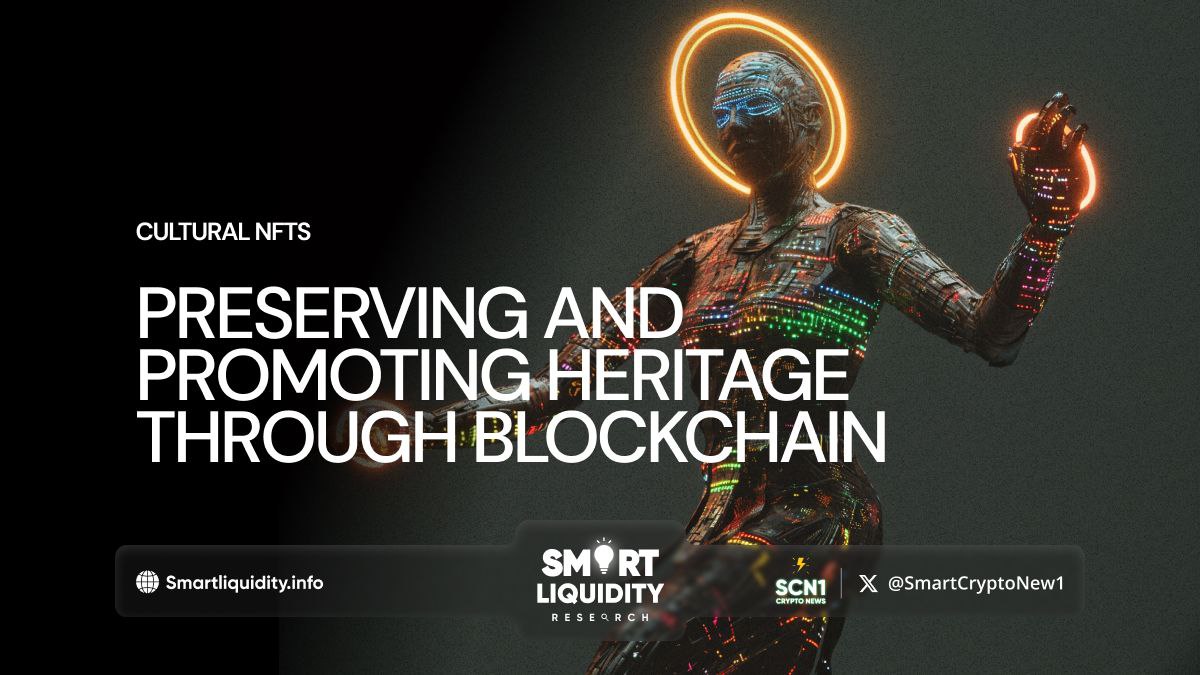Cultural NFTs: Heritage on Blockchain


In the digital age, the preservation and promotion of cultural heritage face new challenges and opportunities. As technology advances, so too do the methods by which we can safeguard and celebrate our diverse histories.
One of the most promising developments in this arena is the rise of Cultural NFTs (Non-Fungible Tokens), which leverage blockchain technology to protect, authenticate, and disseminate cultural assets innovatively.
Understanding NFTs and Blockchain
To appreciate the impact of Cultural NFTs, it’s essential to understand the basics of NFTs and blockchain. NFTs are unique digital tokens that represent ownership of a specific item or piece of content, whether it’s art, music, video, or in this case, cultural artifacts.
Unlike cryptocurrencies such as Bitcoin, NFTs are not interchangeable due to their unique properties. Blockchain technology, which underpins NFTs, is a decentralized ledger that records transactions across many computers so that the registered transactions cannot be altered retroactively. This ensures transparency and security, making it ideal for verifying the authenticity and provenance of digital assets.
The Role of Cultural NFTs
Preservation of Heritage
Cultural NFTs provide a revolutionary method for preserving heritage. Museums, libraries, and cultural institutions can digitize artifacts and mint them as NFTs. This creates a permanent, immutable record of these items and allows them to be preserved in their current state indefinitely. For example, rare manuscripts or ancient relics can be digitized and stored on the blockchain, protecting them from physical degradation and loss.
Promoting Global Accessibility
One of the key advantages of Cultural NFTs is their ability to democratize access to cultural heritage. Traditionally, access to cultural artifacts has been limited by geographical and logistical constraints. However, NFTs can be shared and viewed by anyone with an internet connection, making cultural heritage accessible on a global scale. Virtual museums and galleries using NFTs can provide immersive experiences that bring history to life for people around the world, regardless of their location.
Authenticity and Provenance
Blockchain technology ensures that each NFT is accompanied by a detailed, unalterable history of its origin and ownership. This is particularly important for cultural artifacts, where provenance can be critical in verifying authenticity and legal ownership. By recording this information on the blockchain, Cultural NFTs help to combat issues like forgery and theft, providing a reliable method for tracing the history of an artifact.
Supporting Cultural Practitioners
Cultural NFTs also offer new avenues for financial support to artists, historians, and cultural practitioners. By minting their work as NFTs, creators can sell these digital assets directly to collectors. Often smart contracts ensure they receive a percentage of future resales. This creates a sustainable revenue stream that can support the preservation of cultural practices and the creation of new works.
Real-World Applications
Several initiatives are already harnessing the power of Cultural NFTs. The British Museum, for instance, has partnered with an NFT platform to tokenize and sell digital versions of some of its most famous pieces, including works by Hokusai. This not only generates revenue for the museum but also brings these masterpieces to a broader audience.
In another example, indigenous communities are using NFTs to document and share their cultural practices and stories. By creating digital records of their traditions, they can ensure that their heritage is preserved and shared on their terms, maintaining control over their cultural narratives.
Challenges and Considerations
While Cultural NFTs offer significant benefits, they also present challenges. The environmental impact of blockchain technology, particularly its energy consumption, is a major concern. However, many platforms are working towards more sustainable solutions, such as transitioning to proof-of-stake mechanisms which are less energy-intensive than traditional proof-of-work models.
Moreover, the digital divide remains a barrier. Not all communities have equal access to the technology required to create and engage with NFTs. Efforts must be made to bridge this gap and ensure that the benefits of Cultural NFTs are accessible to all.
In Summary
Cultural NFTs represent a transformative tool for preserving and promoting cultural heritage. By leveraging blockchain technology, they offer secure, authentic, and accessible ways to safeguard our shared history. As technology evolves and becomes more inclusive, Cultural NFTs have the potential to revolutionize the way we interact with and preserve our cultural heritage, ensuring that it remains vibrant and relevant for future generations.




